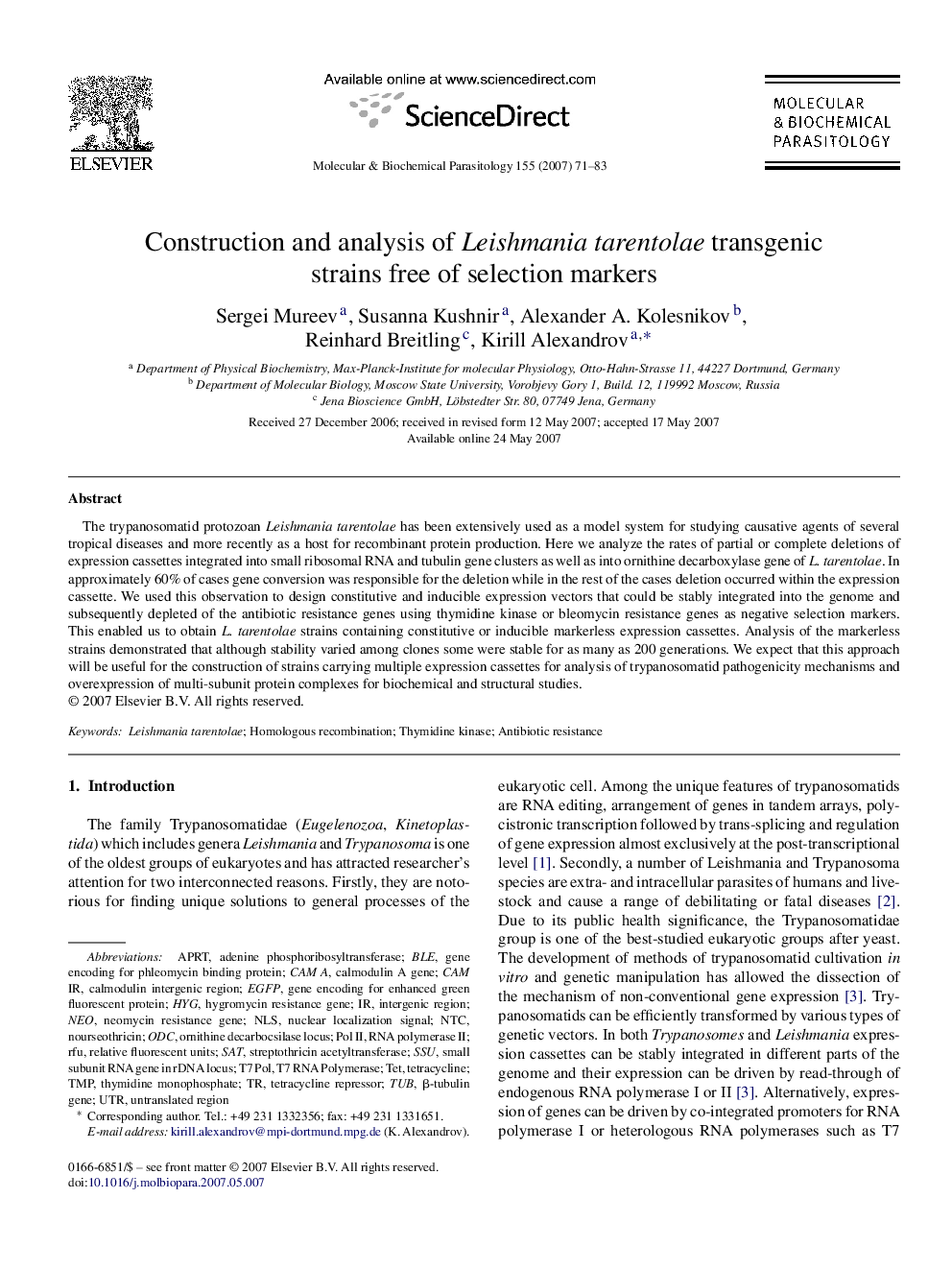| Article ID | Journal | Published Year | Pages | File Type |
|---|---|---|---|---|
| 5916113 | Molecular and Biochemical Parasitology | 2007 | 13 Pages |
Abstract
The trypanosomatid protozoan Leishmania tarentolae has been extensively used as a model system for studying causative agents of several tropical diseases and more recently as a host for recombinant protein production. Here we analyze the rates of partial or complete deletions of expression cassettes integrated into small ribosomal RNA and tubulin gene clusters as well as into ornithine decarboxylase gene of L. tarentolae. In approximately 60% of cases gene conversion was responsible for the deletion while in the rest of the cases deletion occurred within the expression cassette. We used this observation to design constitutive and inducible expression vectors that could be stably integrated into the genome and subsequently depleted of the antibiotic resistance genes using thymidine kinase or bleomycin resistance genes as negative selection markers. This enabled us to obtain L. tarentolae strains containing constitutive or inducible markerless expression cassettes. Analysis of the markerless strains demonstrated that although stability varied among clones some were stable for as many as 200 generations. We expect that this approach will be useful for the construction of strains carrying multiple expression cassettes for analysis of trypanosomatid pathogenicity mechanisms and overexpression of multi-subunit protein complexes for biochemical and structural studies.
Keywords
ODCRFUadenine phosphoribosyltransferaseNourseothricinNLSLeishmania tarentolaeHYGNEOSSUTETAPRTSATeGFPTMPNTCRNA polymerase IIT7 RNA polymeraseBletetracycline repressorTetracyclinethymidine monophosphatethymidine kinasenuclear localization signalAntibiotic resistanceUTR یا untranslated regions untranslated regionIntergenic regionHomologous recombinationrelative fluorescent unitstubPol IIβ-Tubulin geneNeomycin resistance genehygromycin resistance gene
Related Topics
Life Sciences
Biochemistry, Genetics and Molecular Biology
Molecular Biology
Authors
Sergei Mureev, Susanna Kushnir, Alexander A. Kolesnikov, Reinhard Breitling, Kirill Alexandrov,
